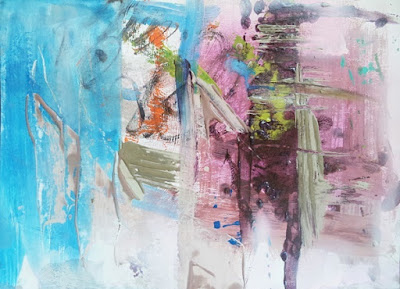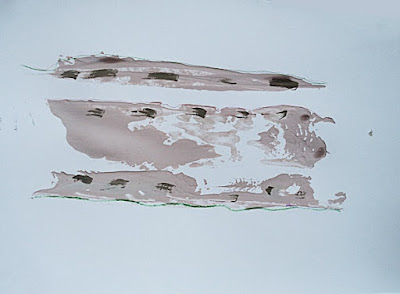I wish to concentrate on two of the many reasons why I paint (in the Western traditions) and intentionally chose
the genre of painting, rather than others such as installations, performance, new media etc. I have employed these
other genres, but concentrate on painting as the major practice when expressing myself in the discourse/s of Fine Art and Visual Arts.
The most general reason being that I employ the genre of painting so as to construct reality or realities. All aspects of my being and existence are relevant to and expressed in my work. I mention this as my whole being, modes of conscious awareness, thinking, feeling, etc are expressed in my work. Therefore when someone views
one of my paintings they are presented with all of my humanity. The most important and aesthetically relevant aspect of my existence being expressed could be summed up as my ‘aesthetical vision’, or my leading aesthetic ideals. This to me is something very personal and intimate, something or rather values that are not up for sale, that have no price. This is one reason why I am not interested in selling my work, anymore. I did sell a number when I was a student, but without Certificates of Authenticity - therefore I can deny them as being part of my work. The reason why I mention ‘selling’ is because I question and do not agree with many things in the art market - things that transform painting into something with a price tag, measured almost exclusively by the
price paid for it. Frequently I see statements by artists who is intent on selling their work. It is almost as if they paint so as to manufacture something they can sell.
I have no interest in selling my work and object to that. This principle of mine places me outside the art market,
commercial galleries (businesses living OFF art, using art to make money) etc.
Another reason why I paint is to educate (or is it to civilize?) people, not merely in a narrow or limited manner as far as Fine Art and Visual Arts are concerned, but their entire construction of reality and self. I hope to make people more critical, open minded, questioning about their entire world, their whole life, their mind set and the way in which their conscious awareness functions, constructs and maintains ‘reality for them’. Hopefully my work will demand of viewers to question (endlessly) these things - not by trying to adapt my values, aesthetic ideals, attitudes, etc, but by the development of more meaningful constructions of reality and self and a more
‘philosophical’ (wisdom seeking and realizing) conscious awareness (less crooked, fallacies, ways of thinking, feeling, perceiving, etc).
Painting being visual will probably first deal with perception (and hopefully eventually involve all the senses,
emotions and ways of being human, or human existence). I wish to make people aware of the fact that their
ways of perception, thinking, feeling, etc (I label this consciousness or conscious awareness) are unnecessarily limited. With this realization the individual is able to reflect on his state and manner or ways of being aware, consciously aware. Then limitations he identifies can be explored and overcome.





































